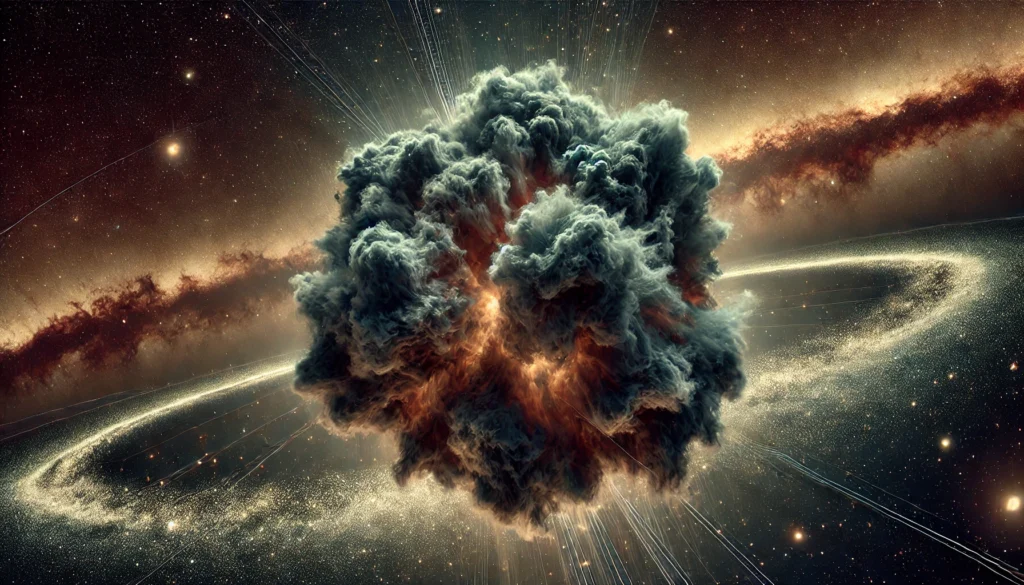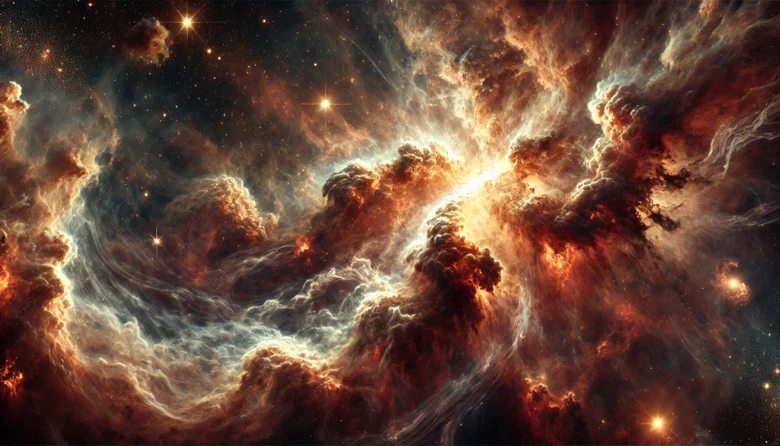Have you ever wondered how stars, the brilliant beacons of our night sky, come into existence? The process of star formation is a complex and fascinating journey, and one of the most crucial yet often overlooked players in this cosmic dance is the magnetic field. In this blog, titled “The Role of Magnetic Fields in Star Formation,” we will explore how these invisible forces shape the birth of stars and why understanding them is key to unlocking the mysteries of our universe.
What Are Magnetic Fields?
Before diving into the specifics of star formation, let’s take a moment to understand what magnetic fields are. Simply put, a magnetic field is an invisible force that exerts a magnetic influence on objects within its reach. We experience magnetic fields every day, from the tiny magnets on our refrigerators to the Earth’s own magnetic field, which protects us from harmful solar radiation.
In space, magnetic fields are created by moving electric charges, often found in the plasma that fills the universe. These cosmic magnetic fields, though invisible, have a powerful influence on the matter around them, especially when it comes to star formation.
The Role of Magnetic Fields in Star Formation
Star formation begins in vast clouds of gas and dust known as molecular clouds. These clouds are the birthplaces of stars, where gravity starts to pull material together into dense regions that will eventually ignite nuclear fusion and shine as new stars.

But gravity isn’t working alone in this process. Magnetic fields play a crucial role in shaping the way these clouds collapse and form stars. Here’s how:
Regulating the Collapse of Molecular Clouds: Without magnetic fields, the gas and dust within a molecular cloud would collapse under gravity much more quickly, possibly leading to the formation of too many stars too rapidly. Magnetic fields provide a counteracting force, slowing down the collapse and allowing for a more controlled and gradual formation of stars.
Guiding the Flow of Material: As gravity pulls material inward, magnetic fields guide this flow along specific lines, helping to shape the structure of the forming star. These fields can channel gas and dust into dense cores where star formation is most likely to occur, effectively acting as a cosmic sculptor.
Preventing Fragmentation: In the absence of magnetic fields, molecular clouds might fragment too easily, leading to the creation of many small stars rather than a few larger ones. Magnetic fields help maintain the integrity of the cloud, allowing it to form stars of varying sizes, including massive ones that will have significant impacts on their surroundings.
Driving Outflows and Jets: As stars form, they often produce powerful jets of material that shoot out from their poles. Magnetic fields are believed to play a key role in launching and guiding these jets, which can carry away excess angular momentum and help the star continue to grow.
Case Studies: Observing Magnetic Fields in Action
Observations of star-forming regions have provided compelling evidence of the role magnetic fields play in star formation. For instance, the famous Orion Nebula, a stellar nursery located about 1,350 light-years from Earth, has been extensively studied. In this region, astronomers have observed how magnetic fields align with the elongated structures of gas and dust, guiding the formation of stars within.
Another example comes from the ALMA (Atacama Large Millimeter/submillimeter Array) observatory in Chile. ALMA’s high-resolution images have revealed intricate magnetic field structures within molecular clouds, showing how these fields influence the distribution of matter and the birth of stars. These observations support the idea that magnetic fields are not just a passive component but an active force in star formation.
The Theoretical Perspective
The importance of magnetic fields in star formation isn’t just observed; it’s also supported by theoretical models. Simulations of molecular cloud collapse show that without magnetic fields, the process would be much more chaotic, leading to different outcomes in star formation. These models help astronomers understand the balance between gravity, turbulence, and magnetic fields, providing insights into the diversity of stars we see in the universe today.
For example, simulations suggest that in regions where magnetic fields are stronger, star formation is more efficient but slower, leading to fewer but more massive stars. Conversely, in regions with weaker magnetic fields, star formation happens more rapidly but results in a greater number of smaller stars. This theoretical framework helps explain the variety of stellar populations observed across different galaxies.
The Broader Implications
Understanding the role of magnetic fields in star formation has broader implications for our knowledge of the universe. For one, it helps explain the initial mass function (IMF), a distribution that describes the range of star masses within a given region. The IMF is crucial for understanding the evolution of galaxies and the distribution of elements across the cosmos.
Moreover, magnetic fields are likely involved in the formation of planetary systems. As stars form, the surrounding material often coalesces into disks that may eventually give rise to planets. Magnetic fields within these disks can influence the migration of planets and the distribution of material, potentially affecting the types of planetary systems that form.
Conclusion
Magnetic fields are the unsung heroes of star formation, quietly shaping the birth of stars and influencing the structure of the universe. From regulating the collapse of molecular clouds to guiding the formation of planetary systems, these invisible forces play a vital role in the cosmic dance of creation.
As we continue to study the stars and the magnetic fields that influence them, we gain a deeper understanding of the universe and our place within it. The next time you look up at the night sky, remember that the stars owe their existence not just to gravity but also to the invisible magnetic fields that helped bring them to life.
Author’s Note
Writing about the role of magnetic fields in star formation has been an eye-opening experience. The more we learn about these invisible forces, the more we realize how crucial they are to the universe’s grand design. I hope this blog has sparked your curiosity and encouraged you to explore the wonders of space.
G.C., Ecosociosphere contributor.
References and Further Reading
- NASA: Magnetic Fields and Star Formation
- Telemachos Mouschovias, UIUC, Top Thirteen Myths on the Role of Magnetic Fields in Star Formation: Part II. https://online.kitp.ucsb.edu/online/stars07/mouschovias2/
- The Mystery of Neutron Stars : The Science 360. https://thescience360.com/the-mystery-of-neutron-stars/
- Fabian, A. C., Sanders, J. S., Taylor, G. B., & Allen, S. W. (2005). A deep Chandra observation of the Centaurus cluster: Bubbles, filaments and edges. Monthly Notices of the Royal Astronomical Society: Letters. https://doi.org/10.1111/j.1745-3933.2005.00037.x
- A full spectral and morphological understanding of the M87 jet – jetset-erc. https://jetset-erc.org/2022/01/31/publication-a-full-spectral-and-morphological-understanding-of-sgr-a/
- Formation of stars and planetary systems in magnetic interstellar clouds — University of Illinois Urbana-Champaign. https://experts.illinois.edu/en/publications/formation-of-stars-and-planetary-systems-in-magnetic-interstellar
- Ginsburg, A., Mills, E., Battersby, C., Longmore, S., & Kruijssen, J. Astro2020 Science White Paper: What is the lifecycle of gas and stars in galaxy centers? https://core.ac.uk/download/189160069.pdf
- Books That Explore the Relationship Between Science and Spirituality | Best Books To Read. https://bestbookstoread.info/posts/books-that-explore-the-relationship-between-science-and-spirituality/




